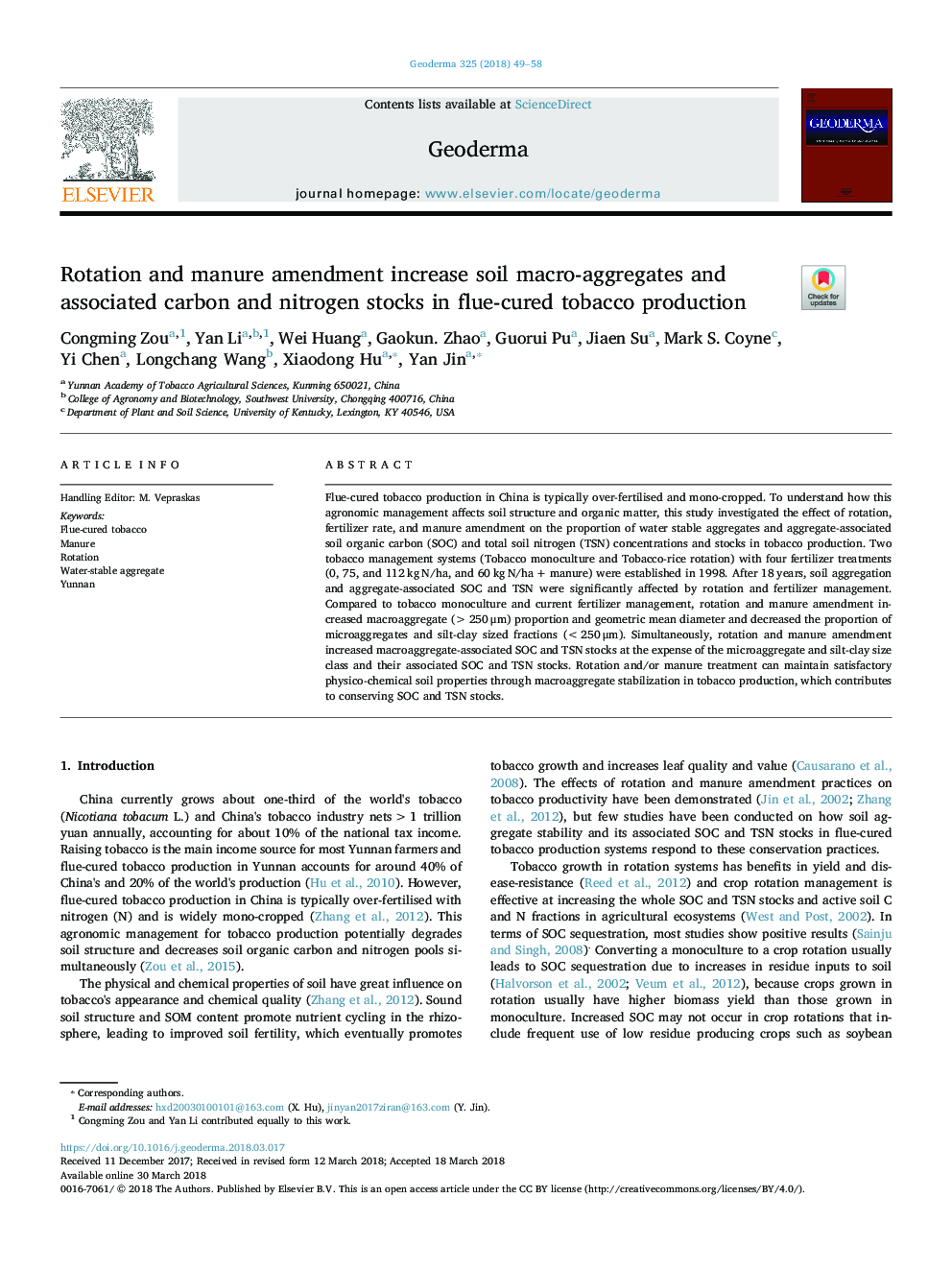| Article ID | Journal | Published Year | Pages | File Type |
|---|---|---|---|---|
| 8893983 | Geoderma | 2018 | 10 Pages |
Abstract
Flue-cured tobacco production in China is typically over-fertilised and mono-cropped. To understand how this agronomic management affects soil structure and organic matter, this study investigated the effect of rotation, fertilizer rate, and manure amendment on the proportion of water stable aggregates and aggregate-associated soil organic carbon (SOC) and total soil nitrogen (TSN) concentrations and stocks in tobacco production. Two tobacco management systems (Tobacco monoculture and Tobacco-rice rotation) with four fertilizer treatments (0, 75, and 112â¯kgâ¯N/ha, and 60â¯kgâ¯N/haâ¯+â¯manure) were established in 1998. After 18â¯years, soil aggregation and aggregate-associated SOC and TSN were significantly affected by rotation and fertilizer management. Compared to tobacco monoculture and current fertilizer management, rotation and manure amendment increased macroaggregate (>250â¯Î¼m) proportion and geometric mean diameter and decreased the proportion of microaggregates and silt-clay sized fractions (<250â¯Î¼m). Simultaneously, rotation and manure amendment increased macroaggregate-associated SOC and TSN stocks at the expense of the microaggregate and silt-clay size class and their associated SOC and TSN stocks. Rotation and/or manure treatment can maintain satisfactory physico-chemical soil properties through macroaggregate stabilization in tobacco production, which contributes to conserving SOC and TSN stocks.
Related Topics
Physical Sciences and Engineering
Earth and Planetary Sciences
Earth-Surface Processes
Authors
Congming Zou, Yan Li, Wei Huang, Gaokun. Zhao, Guorui Pu, Jiaen Su, Mark S. Coyne, Yi Chen, Longchang Wang, Xiaodong Hu, Yan Jin,
